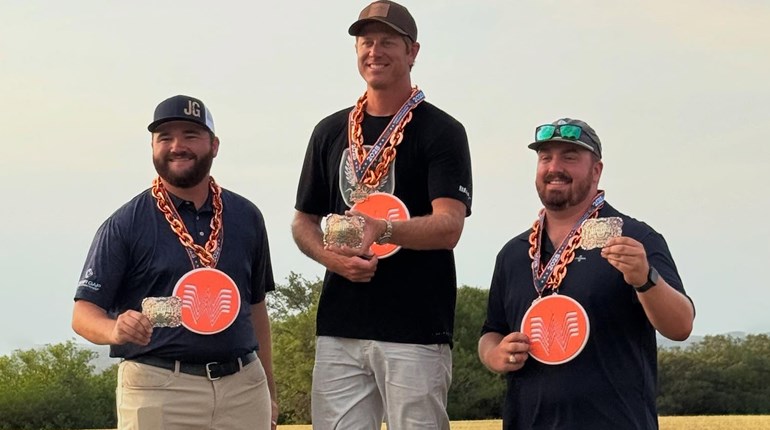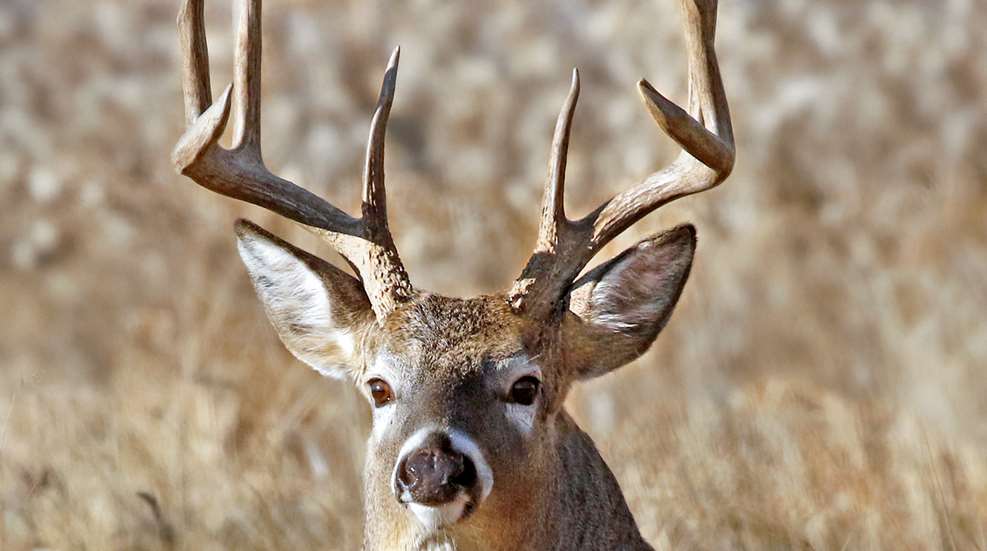
Hunter’s Log, Lowrance Ranch, Day 1—“There’s a good group.” The comment referenced the first three shots I had fired out of this particular Springfield Model 2020 Waypoint, as we stood in the warm sunlight of an autumnal Texas day. Chambered in 6.5 Creedmoor, this rifle was proving to be a tack driver with 143-grain ELD-X Hornady Precision Hunter. As it happens, I have some history with this model rifle. It was the gun I carried into the Idaho backcountry two years prior, on a muley hunt destined for near-lethal disaster. That gun exhibited similar accuracy, but I never was able to notch a tag with it. As such, my excitement at being in the Lone Star State was twofold: I was looking for not only for the largest whitetail of my life but also a sense of closure with this fine hunting gun. Our sight-in accomplished, we set out to do just that.
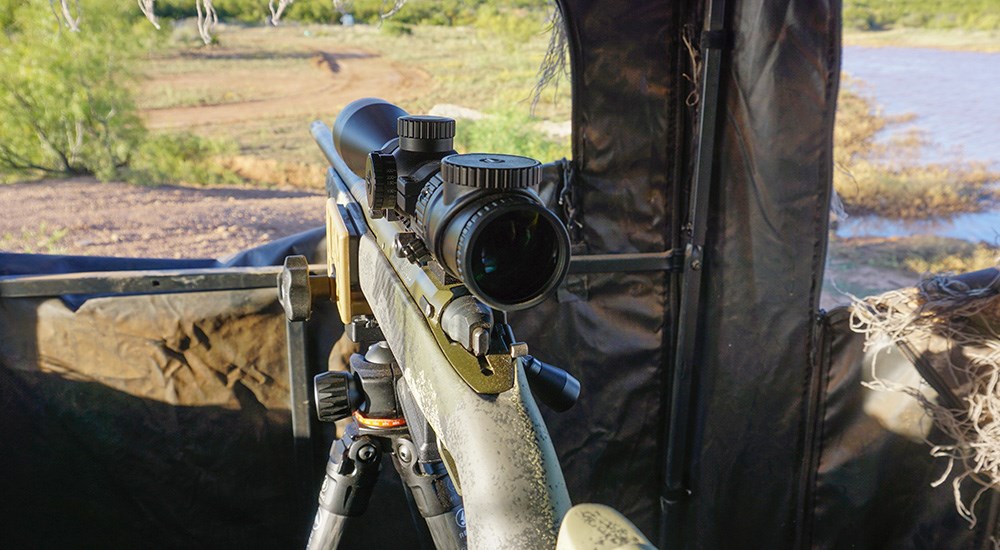
Of course, by the time we had arrived at the ranch, gotten settled and sighted, it was a little late to hit the field for deer. Instead, we loaded into a high-rise rig for a tour of the land—and maybe a little predator control in the process. As our rig bounced and rolled along the dusty panhandle roads, our guide, Tyler Beam, told us a little about the place we were lucky enough to call camp. The Lowrance is a low-fence operation, spanning some 43,000 acres of hills, mesquite, bubbling creeks (they say rivers, but I’m not so sure) and winter wheat. The spread used to border the sizeable 6666 Ranch, currently of “Yellowstone” fame, though a “small” property of some 23,000 acres now lies in between. If your eyes are rolling at my relative descriptions of size, the 6666 spans somewhere around 300,000 acres—everything truly is bigger in Texas.
As it happened, that also applied to the deer. While northwest Texas does not have a reputation for producing the biggest deer in the world, this particular portion is a hidden gem, where even 200-inch specimens are not unheard of. Bucks and does appeared and disappeared from the brush around us, chasing each other in the very first hours of rut. The hills were simply alive with brown and white, with the occasional dark racoon mixed in. As we piloted the rig back towards camp, however, we noticed another shape moving in the brush. Not far off the left-hand side of the path, a bobcat appeared and stared inquisitively our way. “Shoot it,” intoned our guide, in a voice heavy with constrained excitement, so I hefted my rifle and took aim, freehand. The crosshairs settled, the illuminated Bindon Aiming Concept dot of the 4-16x50mm Trijicon AccuPoint burning brightly; I fired, and my first bobcat was down. Having been on the ranch for barely four hours, this was proving quite the start to a trip.
■ ■ ■
Day 2—Thanks to the blood-red full moon smoldering behind an overcast sky, the landscape maintained a dull glow, through which I constantly imagined deer running just out of sight. My guide this morning was Cameron Bradfute, a jovial Texan who, in addition to cooking some of the best food in the state, had been hunting this ranch for almost as many years as I’ve been alive. Other guides Mike and Robert drove us to a stand positioned rather coincidentally near a corn feeder, in what was termed either “Buck Valley” or “Two Buck Road,” depending on whom you asked. Cameron, who favored the latter nomenclature, clambered from the truck and headed to a stand, where we settled in for a good long wait.
Or so I thought. Just before shooting light, I saw a buck trailing a doe some 300 yards out. “That’s a buck,” I breathed, as I hefted a binocular to my eyes for a better look. At a closer line of shrubs, out popped the doe, followed by another doe, followed by yet another. As I peered expectantly, waiting for antlers to arrive, I began to think my eyes had played tricks on me. No sooner had I begun to lose hope when I heard Cameron say, “There he is.” Into frame the buck stepped, looking every bit a shooter. I attempted to calm my excitement. There’s no way the first deer we saw would be a true bruiser. But as he turned to look in our direction revealing dagger-length brow tines, my efforts were undone. This was the buck I had come for.
My opinion notwithstanding, light was still not quite bright enough to truly ensure his maturity, so Cameron and I waited and watched, exasperated, as he passed the corn feeder behind the does and began to slowly feed away from us. As he surveyed the scene in our direction, we finally had a spotless view. Ten points, a sway belly and a nose that was distinctly Italian. Deciding he would not be returning our way to feed—he was far more intent on the does—Cameron gave me the go-ahead, and I clicked off my safety.
As I racked in the next round, keeping sight of him all the while through my Trijicon AccuPoint, I watched the deer hunch and slowly stagger about 10 yards before collapsing in a heap. Barely 15 minutes into shooting light, on the first full day of my very first sit, the buck was down. As we approached the carcass, an astonishing thing occurred. Rather than shrink, the buck seemed to grow with every step, accruing more and more mass until eventually I was standing over a deer that looked like it could go deep into the 160s—potentially beyond. With a split brow tine on the left side, the deer actually sported 11 measurable points from its heavy, chocolate-colored frame. I was beside myself with excitement.
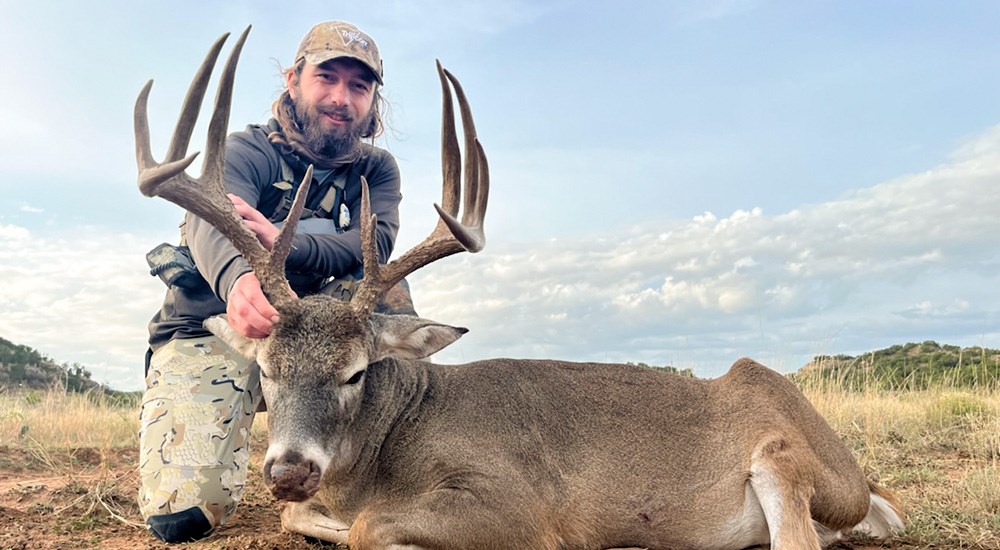 The author’s buck dressed out to 157.5 pounds and sported 11 measurable points from its heavy chocolate frame. It is his best buck ever.
The author’s buck dressed out to 157.5 pounds and sported 11 measurable points from its heavy chocolate frame. It is his best buck ever.
After some pictures, we field-dressed the deer and rolled out the heart. The Hornady ELD-X had shredded it from 200 yards, leaving the buck no chance of wandering off. We hung him on the scale for a dressed weight of 157.5 pounds, rinsed him out and loaded him into the cooler before encountering the hardest dilemma we had faced yet. What do we do now? American Hunter contributor Brad Fenson had taken his buck the evening before, while Adam Aikens, of Trijicon, had dumped his around the same time as me. Two more hunters had yet to kill, but for the rest of us, it appeared a dull several days may lay ahead. Luckily, Texas is a land of far more than just deer.
■ ■ ■
Days 3-5—With my trophy down, the name of the game became predator control and herd management. The Lowrance is positively riddled with hogs, coyotes and bobcats, which will devastate turkey and quail populations if not properly culled, not to mention the damage they do to fawns and crops. Day and night we chased them, watching bait piles and calling by day then cruising with thermals when the sun went down. While our efforts met with varying degrees of success, your author managed to drop a pair of hogs for his efforts, while Adam and Brad cleared the land of hogs, dogs, does and even one more unfortunate cat. Finally, running low on sleep and likely trying the patience of our gracious hosts, our week came to an end.
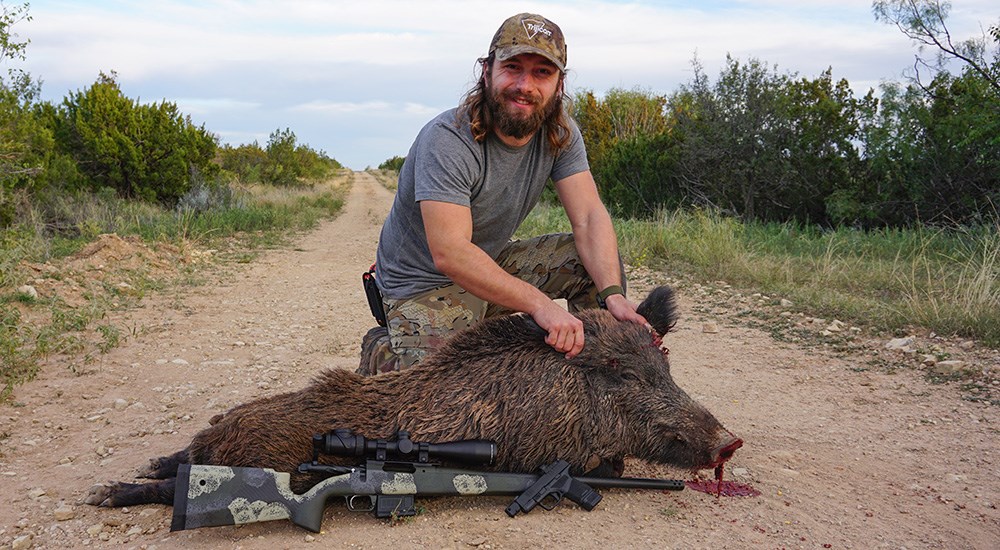 The Lowrance is riddled with hogs, coyotes and bobcats, and the author and other hunters spent three days thinning them on behalf of turkeys and quail.
The Lowrance is riddled with hogs, coyotes and bobcats, and the author and other hunters spent three days thinning them on behalf of turkeys and quail.
■ ■ ■
Lessons Learned—As a hunt winds down, I like to revisit things I’ve gleaned over the course of the week; this outing proved no exception. For starters, I’ve resolved to pay more attention to moon phase and moonlight, even if it has fallen a bit out of vogue. Evenings when the moon burned bright, we watched the deer move later into the night through our thermals—they similarly moved later in the day, favoring noon over morning, and right at last light instead of a few hours before. In fact, the timed feeders barely even seemed to affect their behavior, so slavish was their devotion to the lunar luminescence. Nights when the moon sat behind thick clouds, on the other hand, activity went back to its normal, more crepuscular schedule. While these are patterns I had noticed throughout the years already, seeing things through thermals solidified my suspicions: these animals were taking real advantage of the midnight light.
Second, and more embarrassingly, buck fever can strike anyone, anytime, anywhere—even on a doe. I hadn’t gotten the shakes since I was a teenager, but after dropping a bobcat, a trophy buck and two hogs without a hitch I disintegrated into a pile of quivering jelly when a middling doe stepped out. My entire body shook as my pulse climbed past 120, and I struggled to determine just what was going on. Unaccustomed as I was to this strange state of affairs, all the box-breathing in the world couldn’t save me—I yanked the tar out of my trigger, sending the shot careening into the dirt and scaring the daylights out of the poor deer. In the future, I won’t be caught so off-guard.
Ultimately of course, as frustrated as that made me, it is that very excitement that keeps us coming back, spending long hours in the woods or fields in pursuit of our favorite game. Over the course of the previous days I had targeted members of four different species and found success on three (coyotes eluded my sight picture). Not bad for four days in Texas.
Trijicon AccuPoint 4-16x50mm
In this age of ever-longer shots, ballistic turrets and onboard rangefinders, sometimes standard, hold-center-and-shoot scopes can be overlooked in favor of their larger, flashier counterparts. This is not always a good thing. With added capability often comes added weight, while added complexity can breed errors when seconds count and decisions must be made quickly. For many hunters and many hunts, therefore, where shot distance rarely (if ever) eclipses 300 yards, this additional complexity is not just unnecessary it is actually undesirable. Just because you don’t want added features does not mean you don’t want quality glass, however.
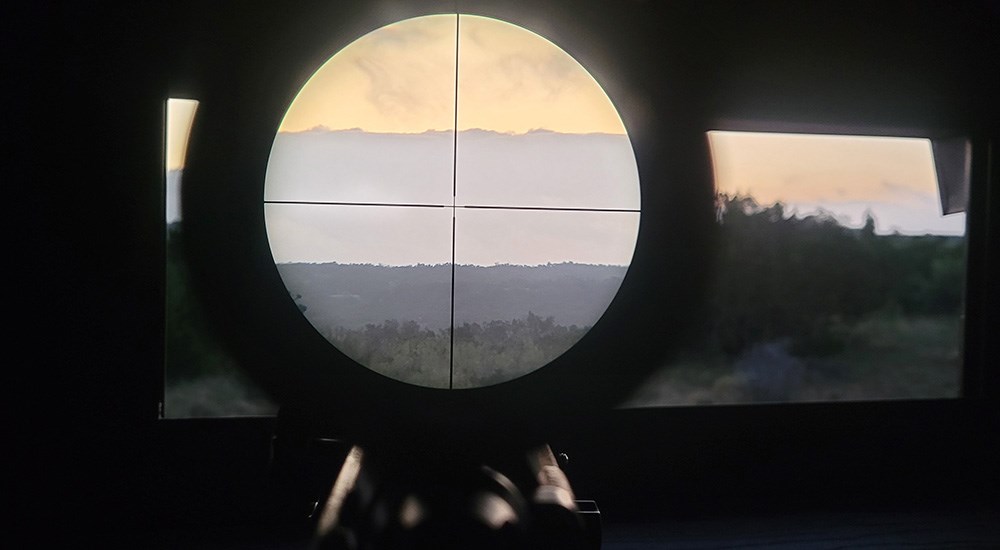
Enter the Trijicon AccuPoint 4-16x50mm, sporting a 30mm tube. With a 4X magnification range, an aiming point illuminated with both fiber optics and tritium, and glass clear enough to protect the Mona Lisa, the scope will get you on target with pinpoint precision from first light until last. It is also durable enough to maintain zero through all the bumps, bounces and rough handling that a hunt can entail. In addition to a variety of other magnification levels, the scope comes with three reticle options—a Triangle, a Duplex Crosshair and a Ranging Crosshair with hash marks—all available with either red or green aiming points. For illumination, tritium takes over in low-light conditions, while in bright sun, daylight is concentrated through an adjustable opening to create an almost unbelievably bright dot or triangle of light within. MSRP is $1,441-$1,544.
Springfield Model 2020 Waypoint
Of all the guns I’ve taken afield, this one ranks somewhere near the top. Built around a silky smooth proprietary action, the Model 2020 Waypoint looks like the fusion between a standard precision rifle and a backcountry hunter’s preferred piece. It shoots like it, too.
The bolt is fluted with dual cocking cams for easy operation, while its lugs ride in electrical discharge machined (EDM) raceways for smooth cycling. If you’re curious what EDM means, an oversimplified explanation is that electricity is used to shape those grooves rather than standard tooling, resulting in incredibly smooth surfaces. Atop the action rides a Picatinny rail with two recoil pins, which is attached to Remington-700-pattern base mounts. Spent shells are sent through an enlarged ejection port by a sliding extractor, which cuts down significantly on the chances of a failure to eject in adverse conditions. A dual-plane feed ramp further contributes to reliability. The action is fed by an AICS-pattern magazine, while shots are released via a TriggerTech trigger, adjustable from 2.5 to 5 pounds.
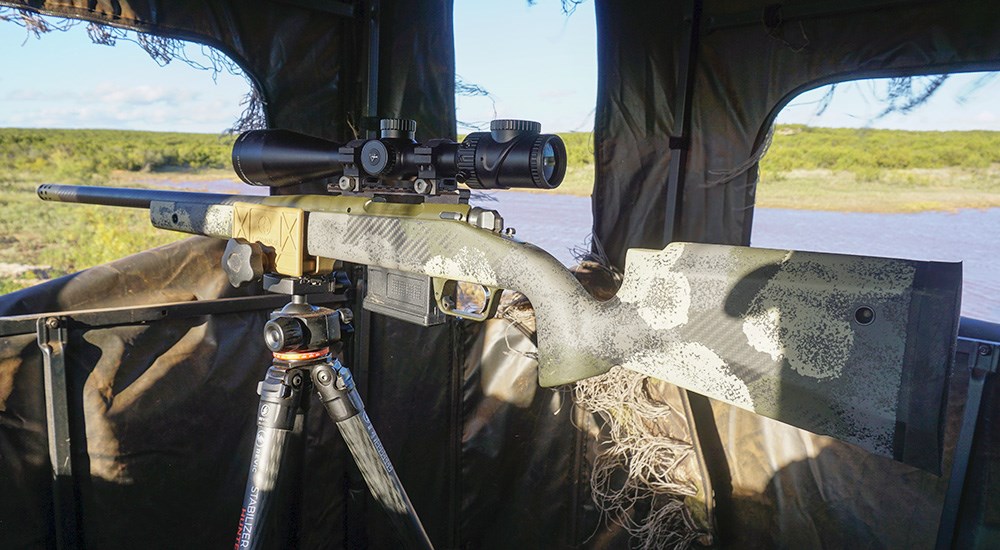
The gun’s carbon-fiber stock was designed in conjunction with AG Composites, and is hand-laid and pillar-bedded for a tight marriage to the action. It is available with a three-axis adjustable cheek comb, but as that adds about 12 ounces to the overall weight, I tend to prefer the non-adjustable variant. Finally, for maximum weight savings, the gun is available with a carbon fiber-wrapped barrel, which can save you around another 7 ounces, depending on barrel length. If that’s not your cup of tea, a standard, fluted 416 stainless steel barrel is also available. Altogether, the rifle boasts a .75 MOA accuracy guarantee, and I certainly couldn’t argue given the performance I saw using Hornady Precision Hunter and Match ammunition. The manufacturer’s suggested retail price is $1,797-$2,527.














